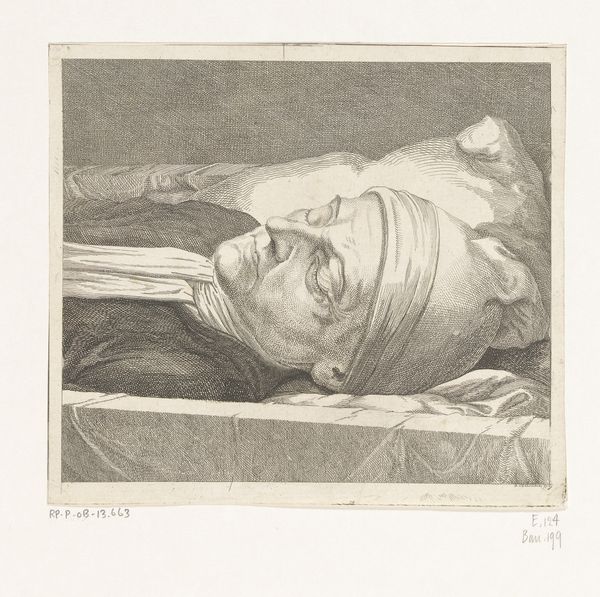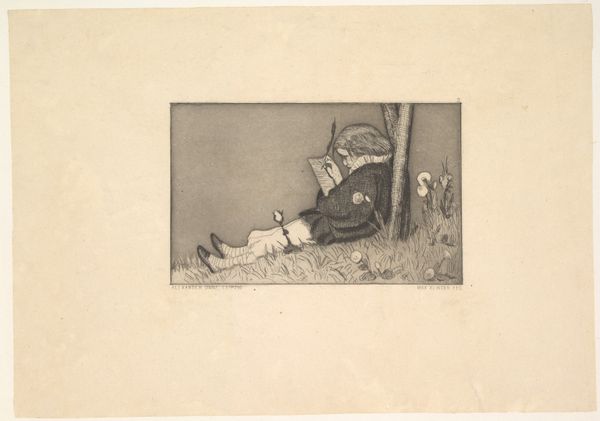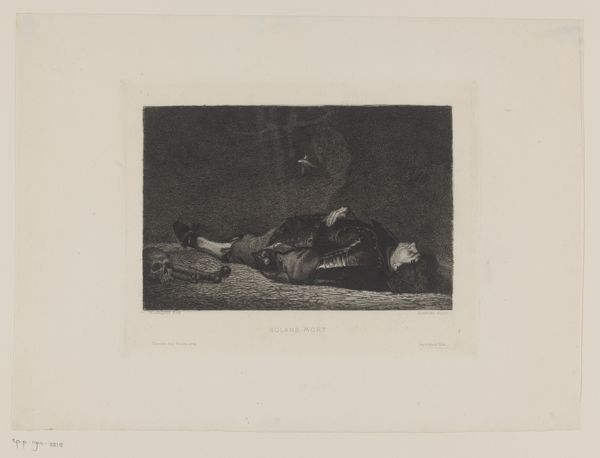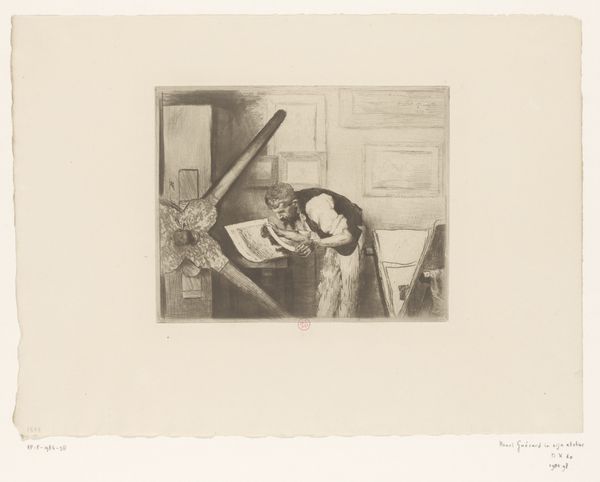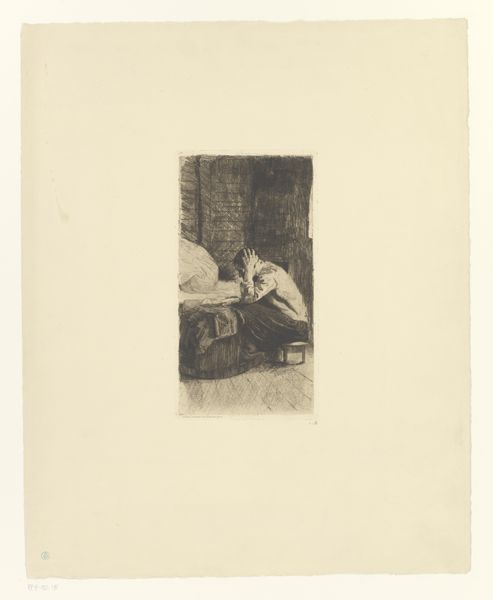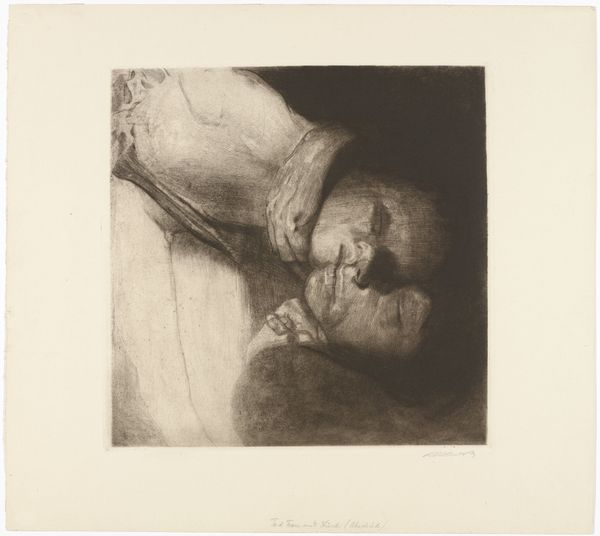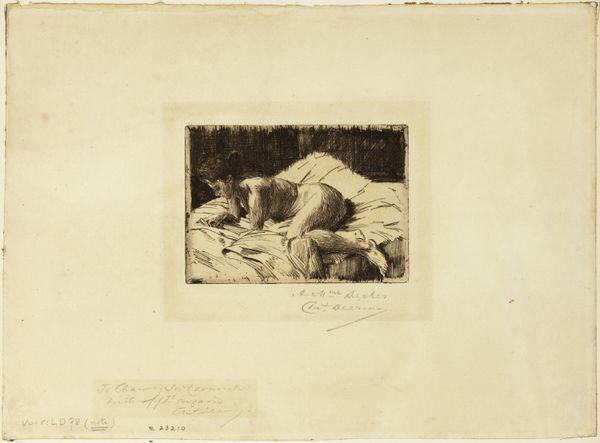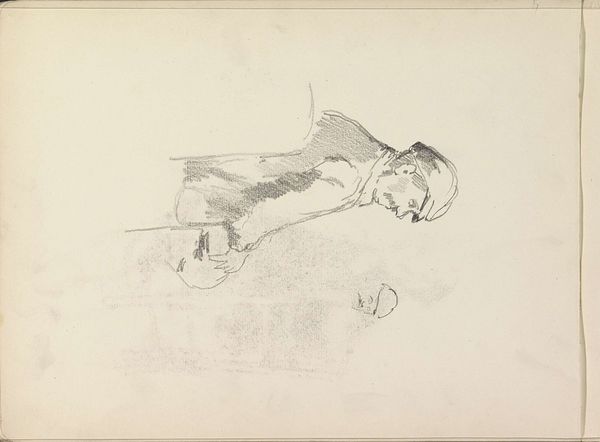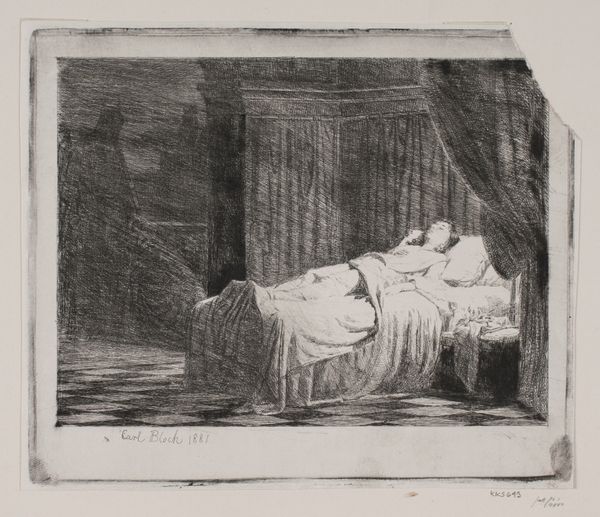
drawing, print, etching, paper
#
portrait
#
drawing
# print
#
etching
#
paper
#
symbolism
#
genre-painting
#
post-impressionism
Dimensions: 194 × 281 mm (image); 208 × 297 mm (plate); 202 × 290 mm (primary support); 443 × 629 mm (secondary support)
Copyright: Public Domain
Editor: So, this is "The Day After," an etching on paper from 1894 by Edvard Munch, housed right here at the Art Institute. The stark lines and monochrome palette really give it this air of desolation...almost like a hangover visualized. What's your take on it? Curator: Well, beyond the immediate representation of, perhaps, a 'day after', the imagery speaks to larger anxieties prevalent in Munch’s time – anxieties still echoing today. Notice the stark contrast between the vulnerable, exposed figure and the table laden with remnants, emblems of indulgence. Doesn't it make you consider what symbols these might represent? Editor: Hmm, yeah. The bottles could signify fleeting pleasure, while her sprawled pose maybe embodies vulnerability or a loss of control? Curator: Precisely. And that pose, coupled with her vacant expression, isn’t just about physical discomfort, is it? Consider how societal pressures and expectations regarding women's roles, particularly their sexuality, often led to feelings of shame or disillusionment. The very 'day after' becomes a loaded symbol. It could signify broken promises, or the consequences of freedom. The morning-after regret can symbolize many things, even an emotional turning point. Do you think that’s just speculation? Editor: No, I think that's spot on. Knowing more about the era definitely illuminates what’s beyond the literal. The etching process itself, with its harsh lines, mirrors that sense of unease and stark reality you're talking about. Curator: Indeed. The medium becomes a potent symbol in itself. The sharp, unforgiving lines mirroring a sharp, unforgiving reality. Ultimately, it's a confluence of technique, subject matter and historical context working in tandem. It’s about a moment, certainly, but it’s also a lasting reflection of enduring human experiences, particularly around identity. Editor: I didn't expect to peel back so many layers. Seeing it now, the image has become less about that single "day after," and more about its lasting ripples through time and culture.
Comments
No comments
Be the first to comment and join the conversation on the ultimate creative platform.
